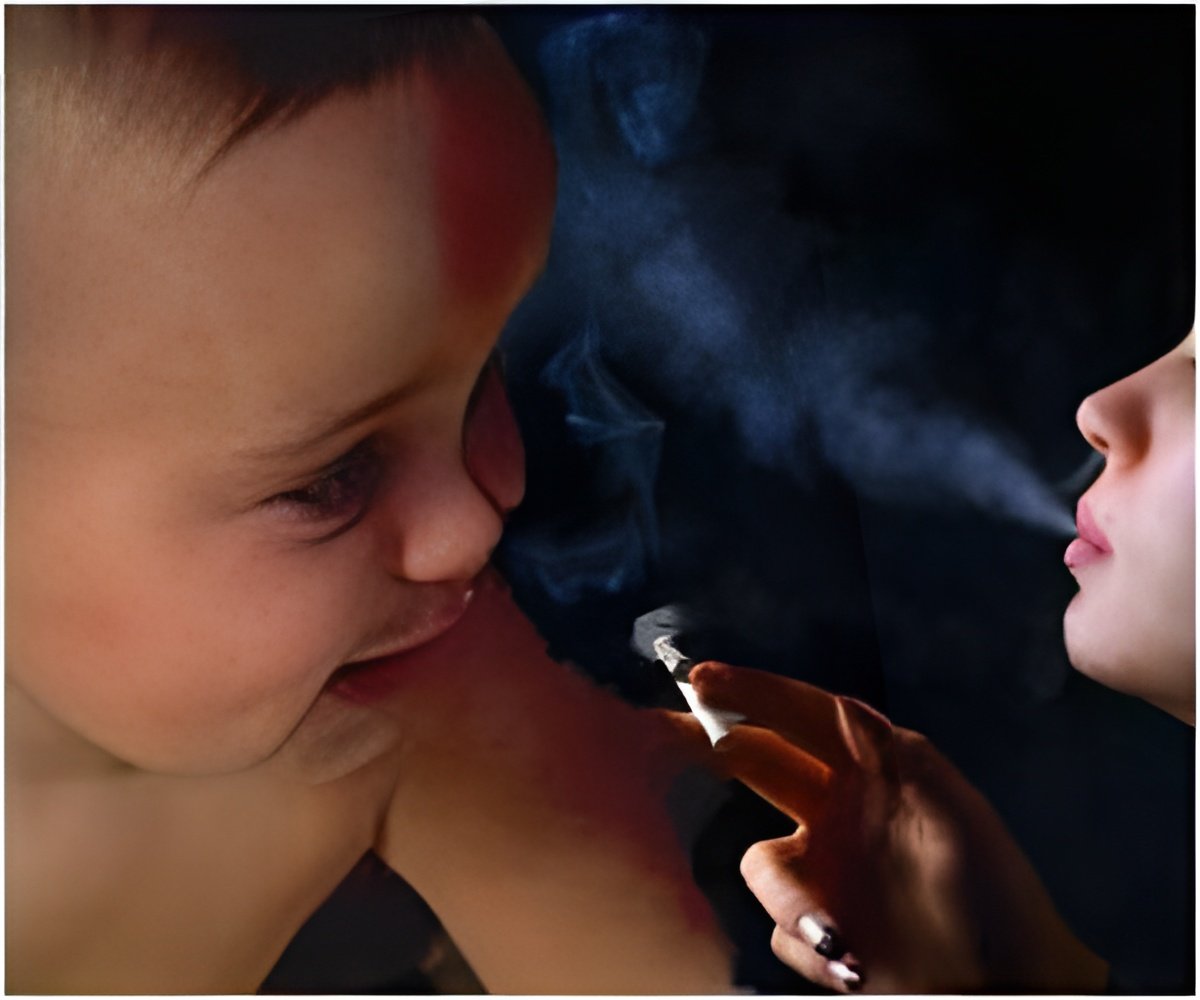Second-hand smoke was estimated to have caused 603 000 premature deaths and the loss of 10·9 million DALYs in 2004.

Second-hand smoke or SHS is a mixture of 2 forms of smoke: side stream smoke and mainstream smoke. Side stream smoke is what comes from the end of a lighted cigarette, pipe, or cigar. Mainstream smoke is the smoke exhaled by a smoker. Side stream smoke is more dangerous since it has a higher concentration of cancer-causing agents (carcinogens). Children are more heavily exposed to SHS than any other age-group.
Though exposure to second-hand smoke is common in many countries, the true magnitude of the problem is poorly described. A study was performed to estimate the worldwide exposure to second-hand smoke and its burden of disease in children and adult non-smokers in 2004. Data from 192 countries were analysed. The indicators used to assess disease burden were death and disability-adjusted life year (DALY). DALY is the number of years lost due to ill-health, disability or early death.The results of this retrospective analysis were published online in Lancet, the leading medical journal. The findings of the study were stunning. What follows is a list of the observations:
· Worldwide, 40% of children, 33% of male non-smokers, and 35% of female non-smokers were exposed to second-hand smoke in 2004
· The highest proportions exposed were estimated in Europe, the western Pacific, and region B of southeast Asia (Indonesia, Sri Lanka, Thailand)
· 603 000 deaths were attributable to second-hand smoke in 2004. This was 1.0 % of worldwide mortality
· 47% of deaths from second-hand smoke occurred in women, 28% in children, and 26% in men
· Ischaemic heart disease, lower respiratory infections, asthma and lung cancer were the chief contributors of death. These fatal diseases were caused by SHS.
· The largest disease burdens were from lower respiratory infections in children younger than 5 years (5 939 000), ischaemic heart disease in adults (2 836 000), and asthma in adults (1 246 000) and children (651 000).
. Death and Disability-Adjusted Life Year or DALYs lost because of exposure to second-hand smoke amounted to 10·9 million
Second-hand smoke is closely related to active smoking rates where no robust and extensive smoke-free indoor policies exist. Women have the greatest burden of deaths of the total attributable to second-hand smoke, whereas children are most affected in terms of DALYs .
It is definitely clear that substantial health gains could be made by extending effective public health and clinical interventions to reduce passive smoking worldwide.
Source:
The Lancet, Volume 377, Issue 9760, Pages 139 - 146, 8 January 2011
Article: Worldwide burden of disease from exposure to second-hand smoke: a retrospective analysis of data from 192 countries
Source-Medindia







